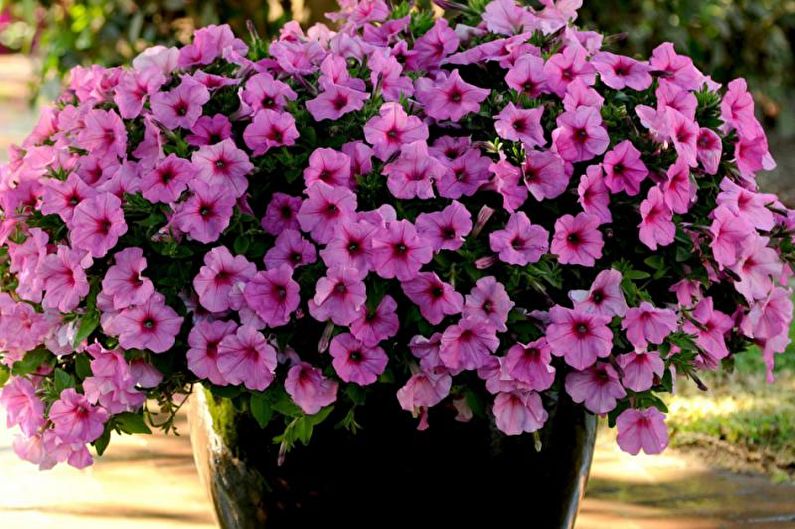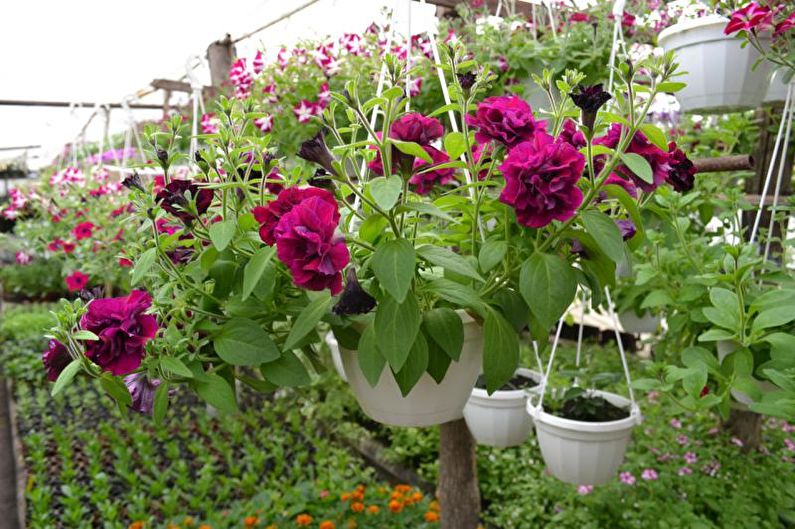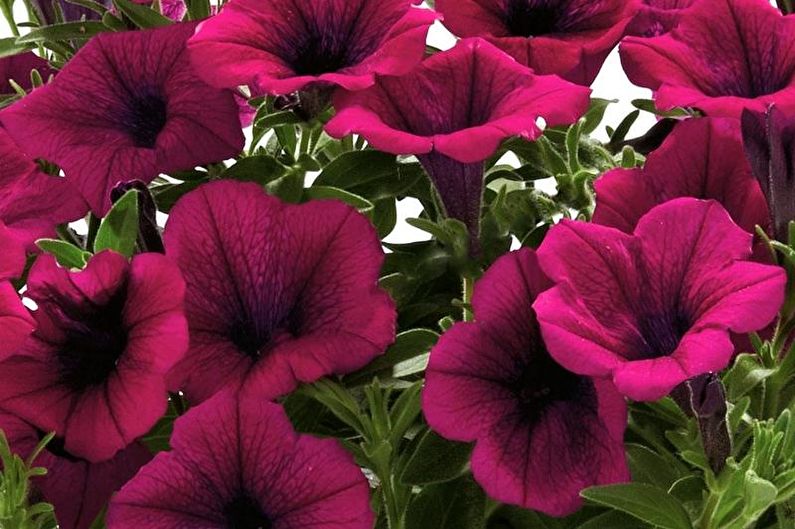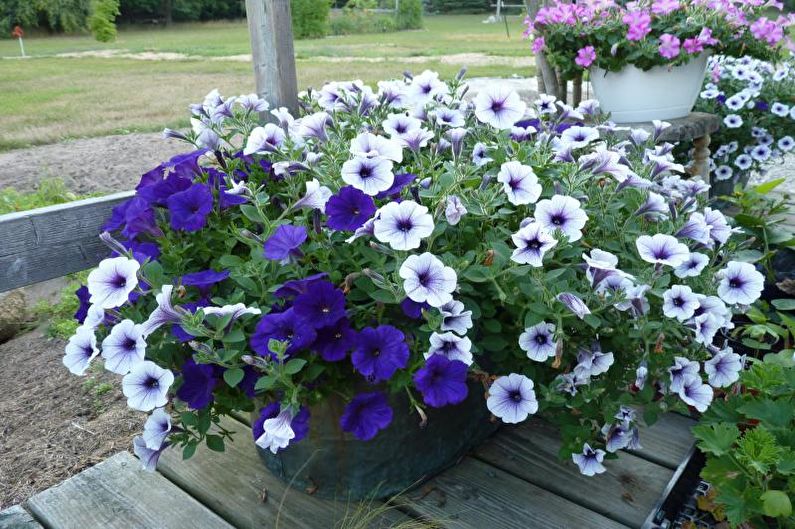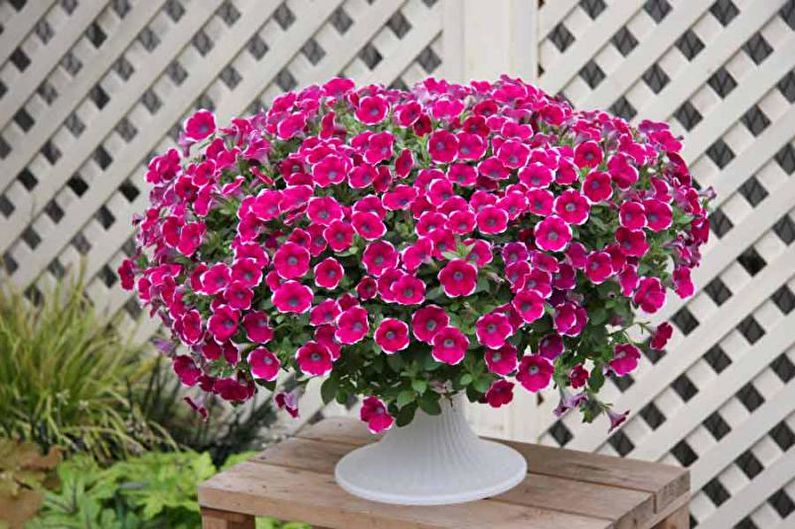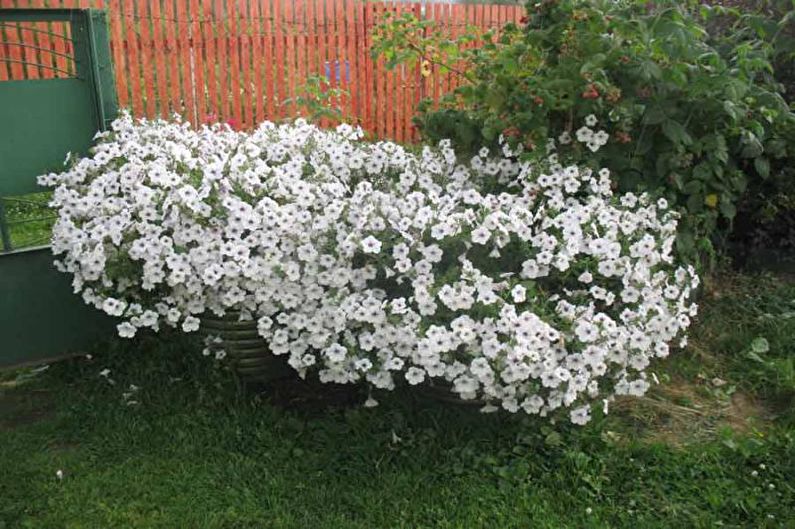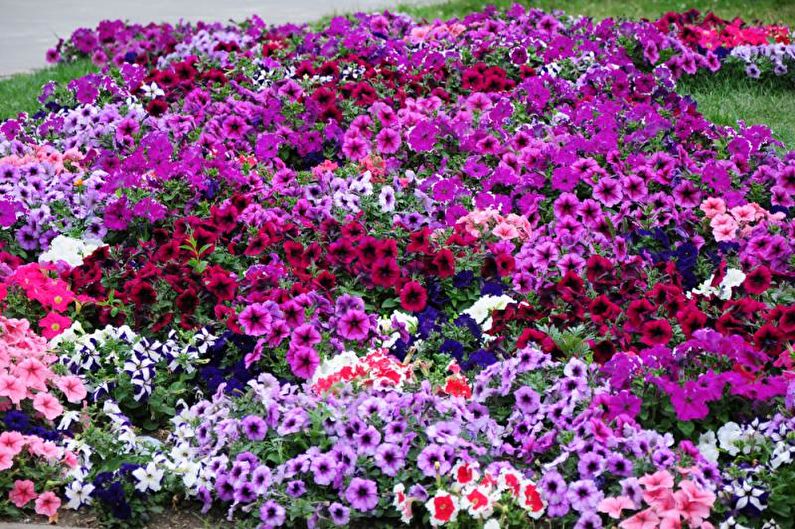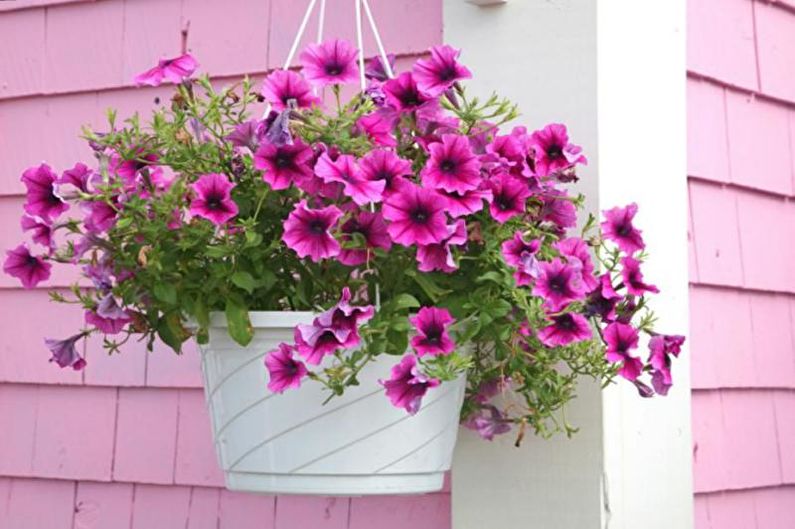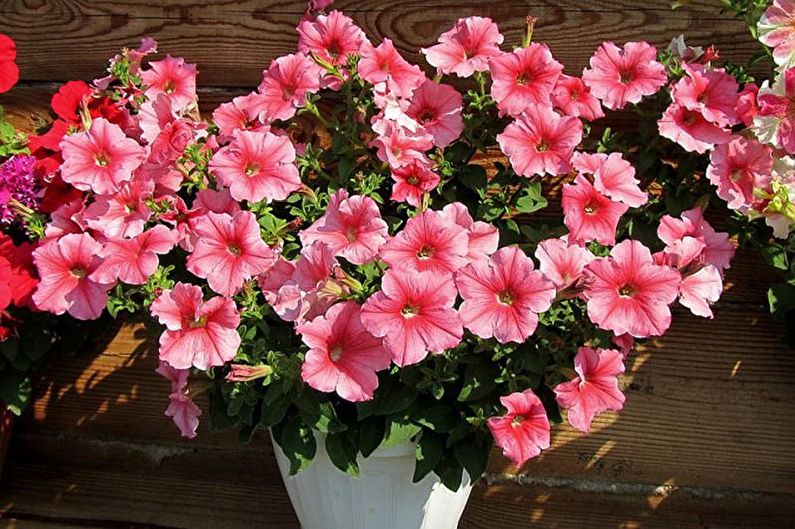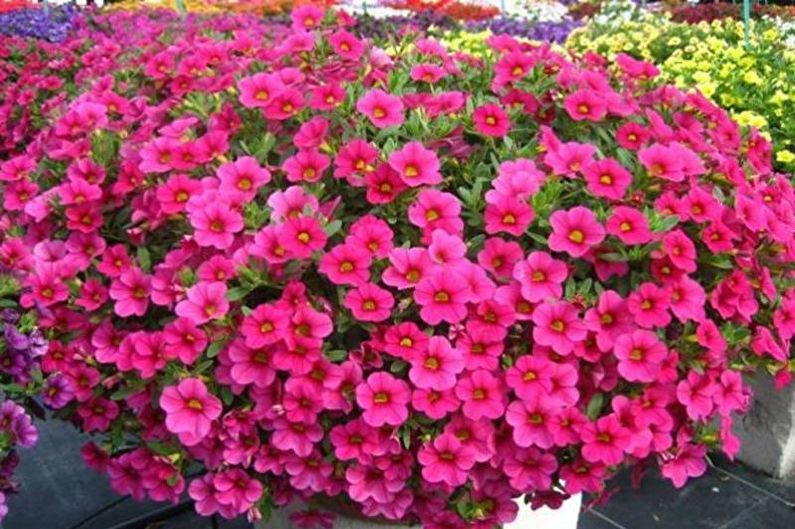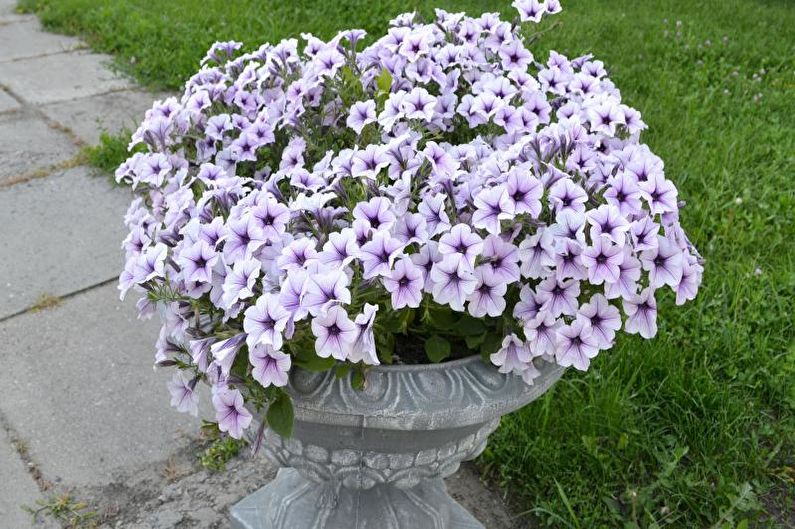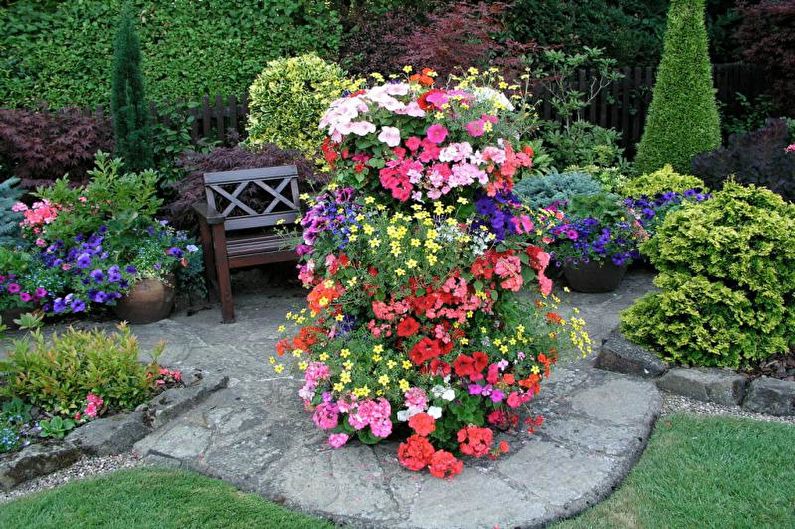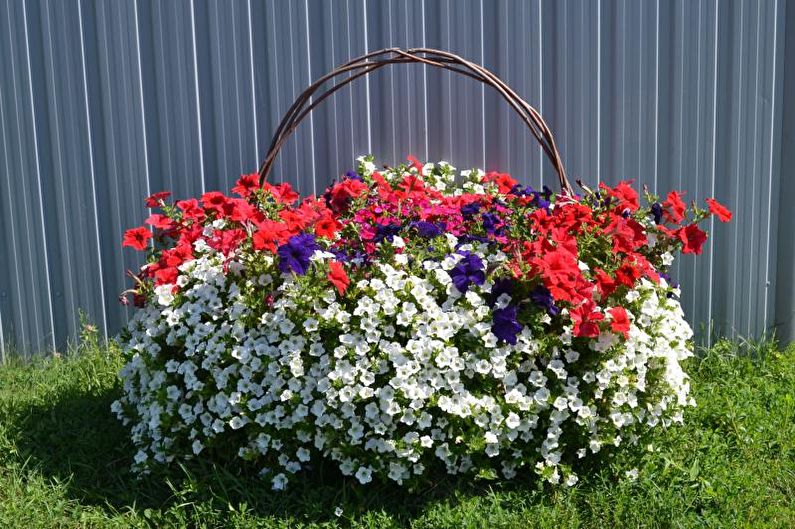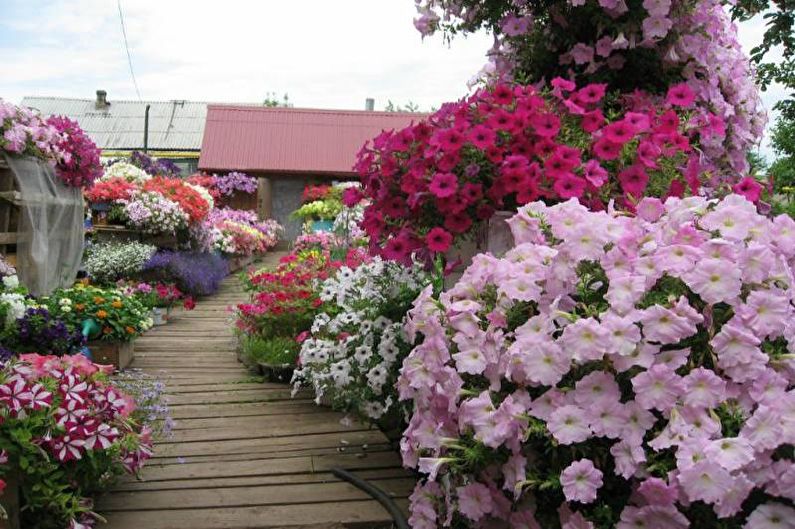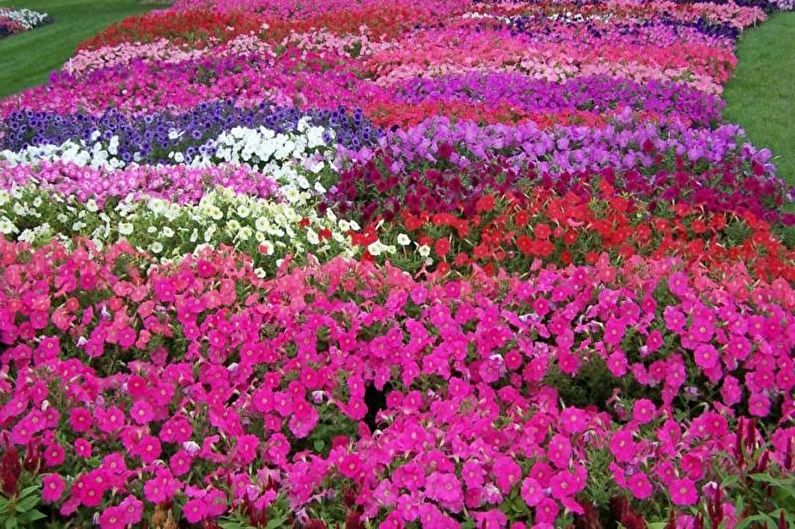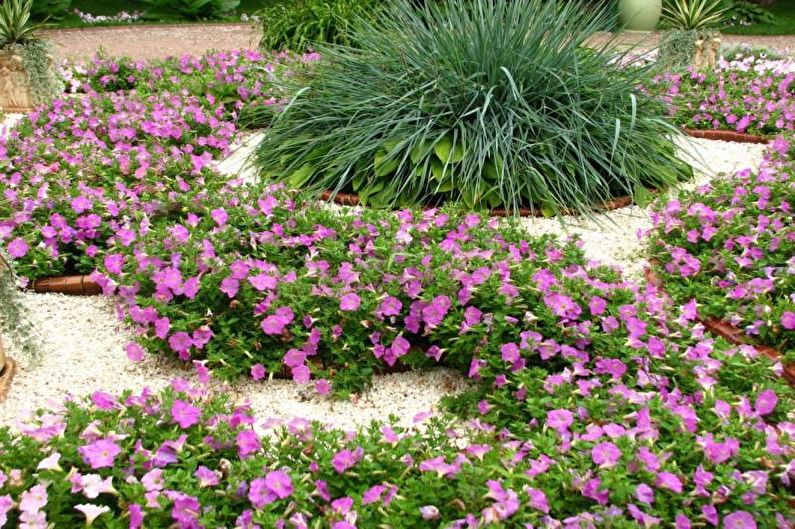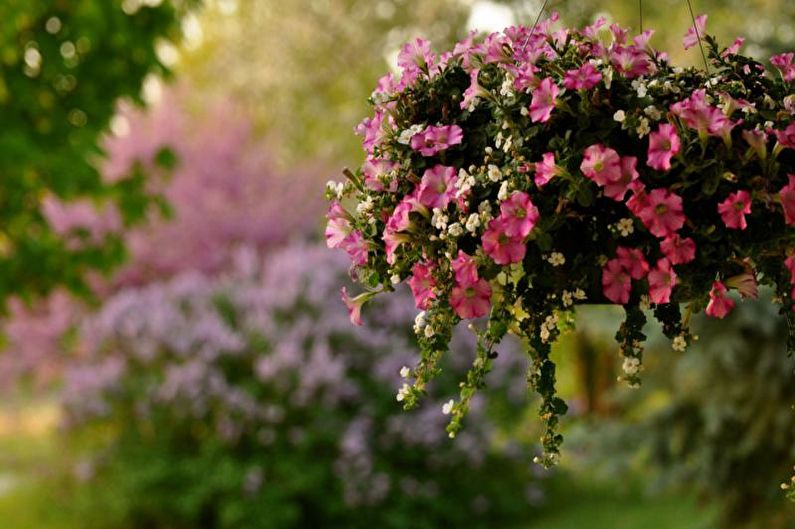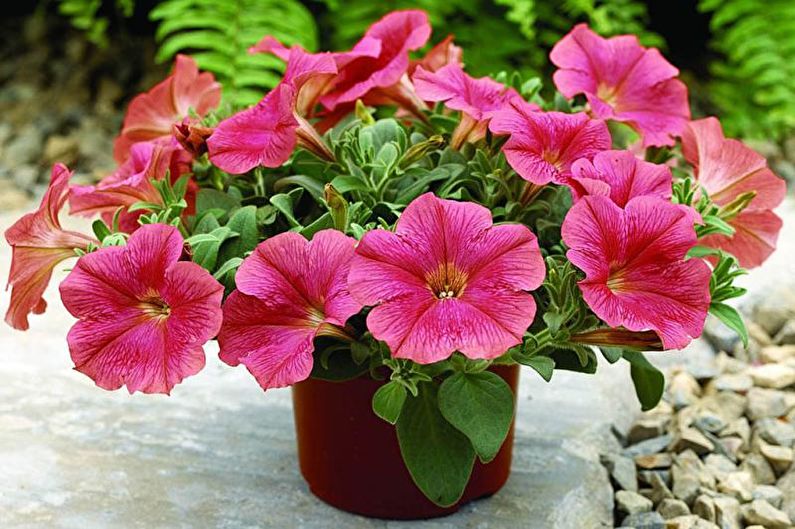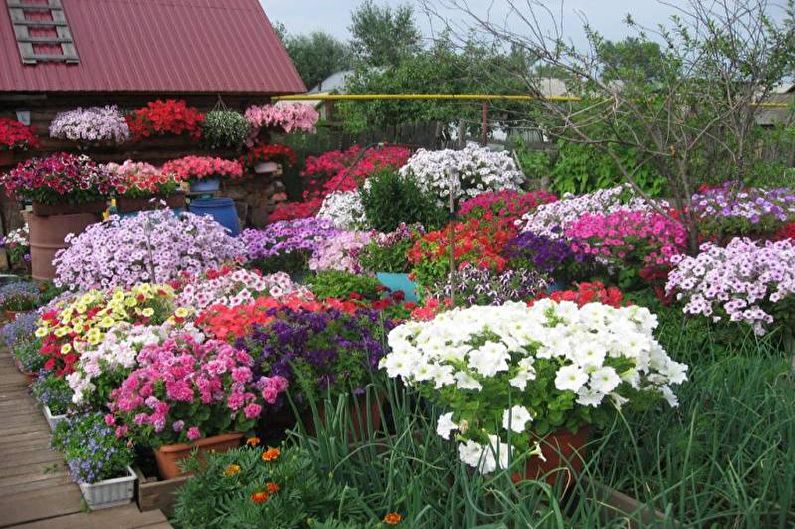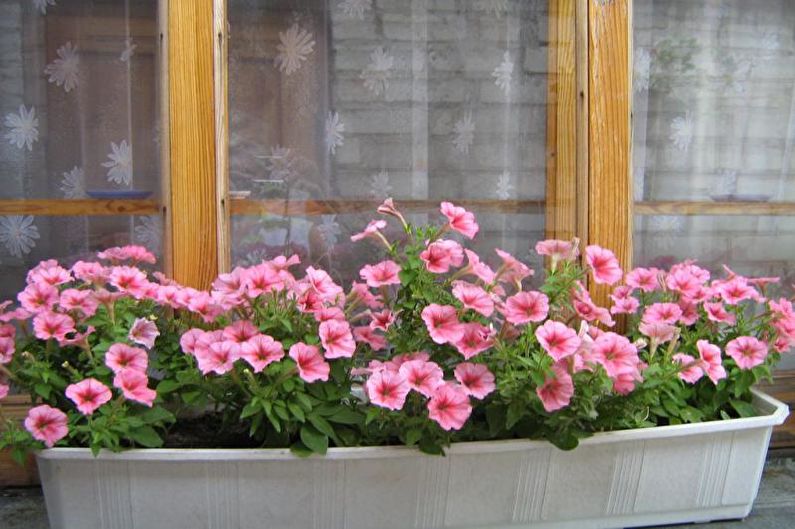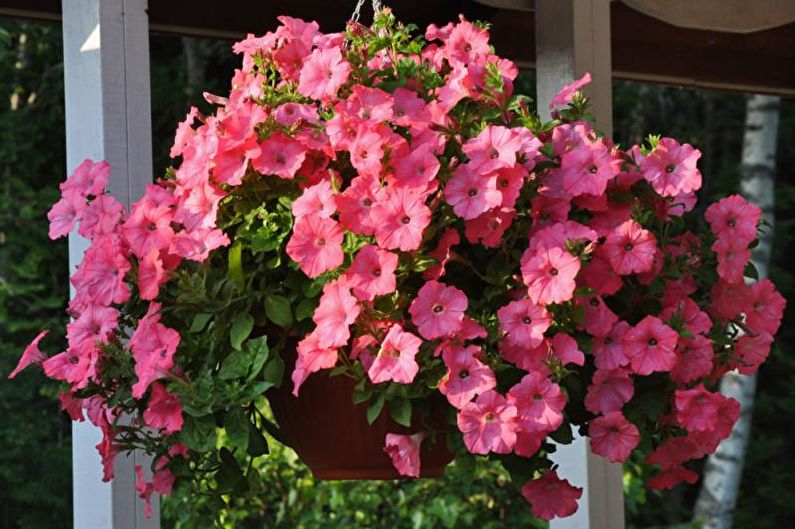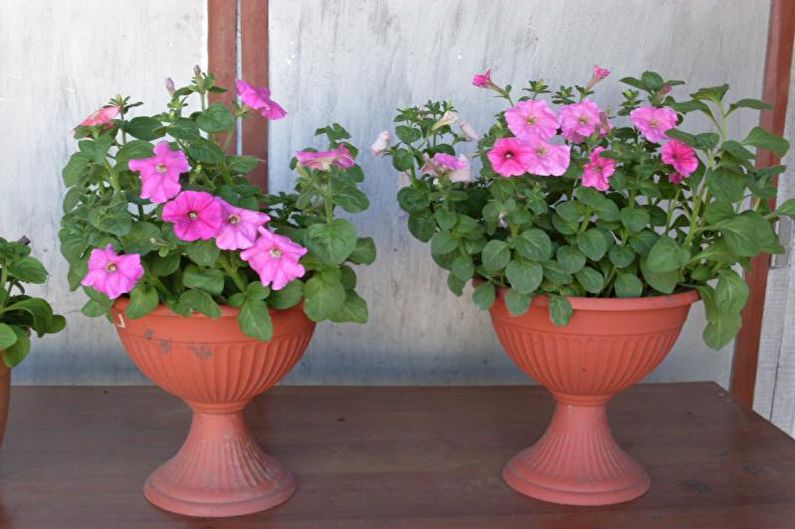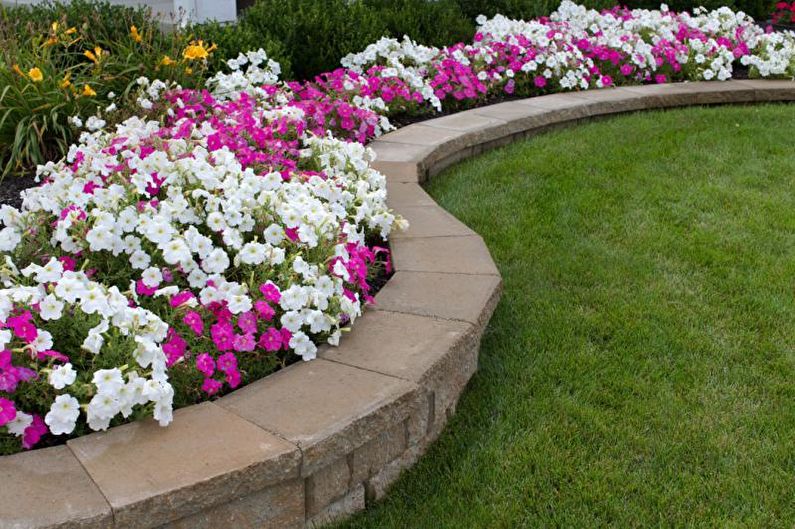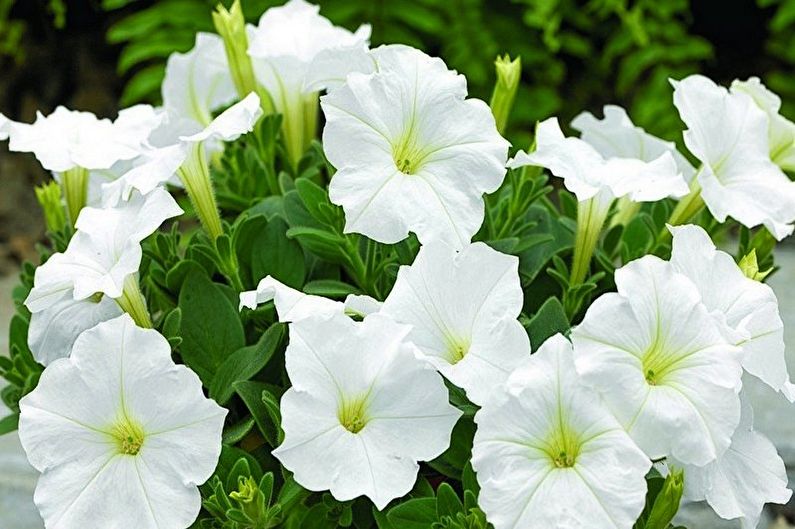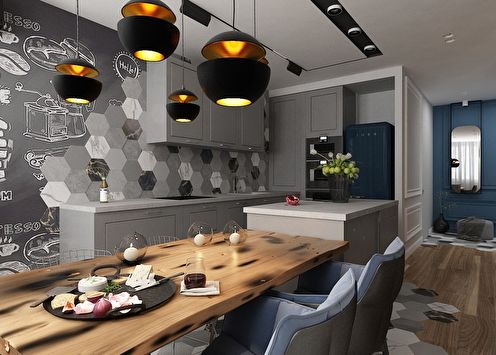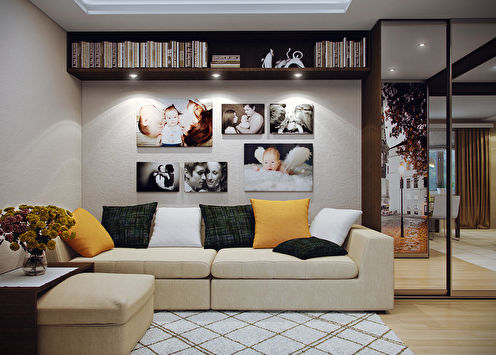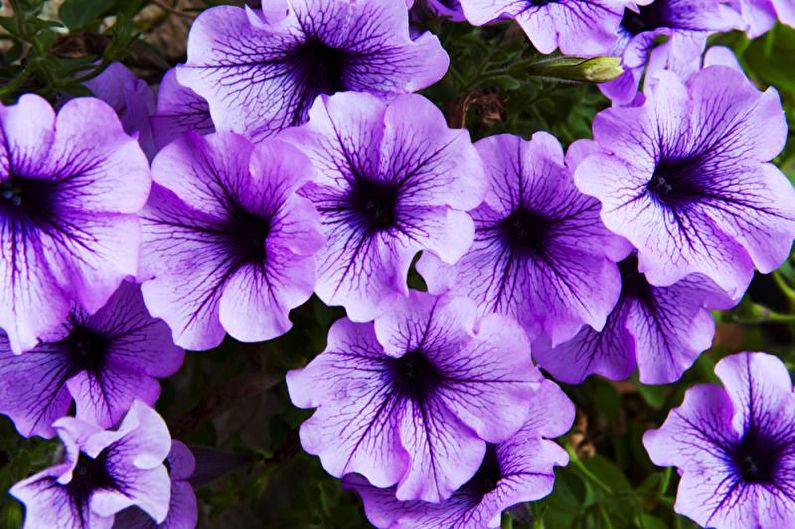
Due to its extraordinary colorfulness, petunia has long been the favorite of most gardeners. Throughout the summer, it adorns flowerbeds and walkways, balconies, verandas and window sills, gardens and parks. Blooming petunia resembles bright fluffy clouds of red-pink, purple, violet, yellow-orange shades, exotic black, blue, maroon varieties are also found. The variety and richness of colors allow you to create amazing compositions even without combining with other plants. Petunia bushes are a self-sufficient decor for suburban areas, city lawns, terraces and any other areas that with such landscaping instantly take on an elegant look.
General characteristics of the flower
Being a guest from the South American tropics, petunia belongs to the light and heat-loving annual crops. Depending on the variety, it can reach from 10 to 100 cm in height, the diameter of the flowers is 5–10 cm. In bush varieties, the stem is erect, and the adult plant has a spherical shape. There are also ampelous petunias with creeping shoots - they are hung in a cache-pot, they are decorated with vertical structures and tall flowerpots.
Abundantly flowering bushes are strewn with bright flowers, which can be both monophonic and with contrasting veins, a middle or a border. Varieties of mixed shades look very unusual. As a rule, a rich purple-violet palette is typical for petunias, but pastel pinkish-lilac, peach, and white tones are also found.
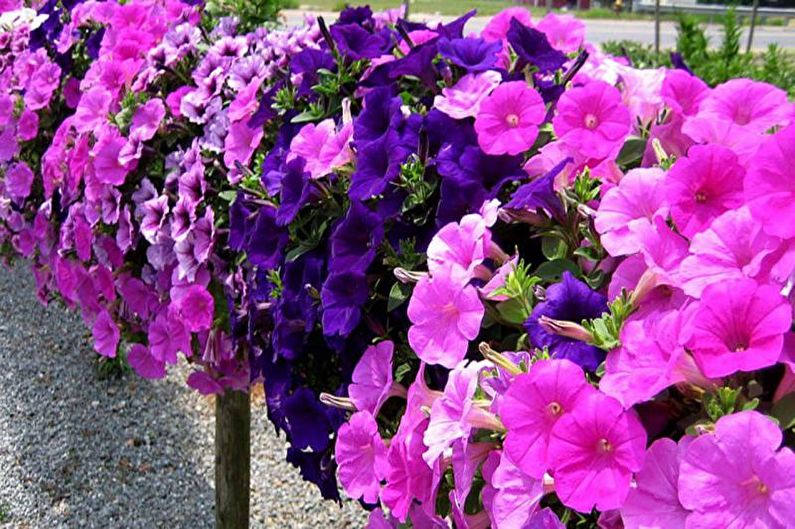
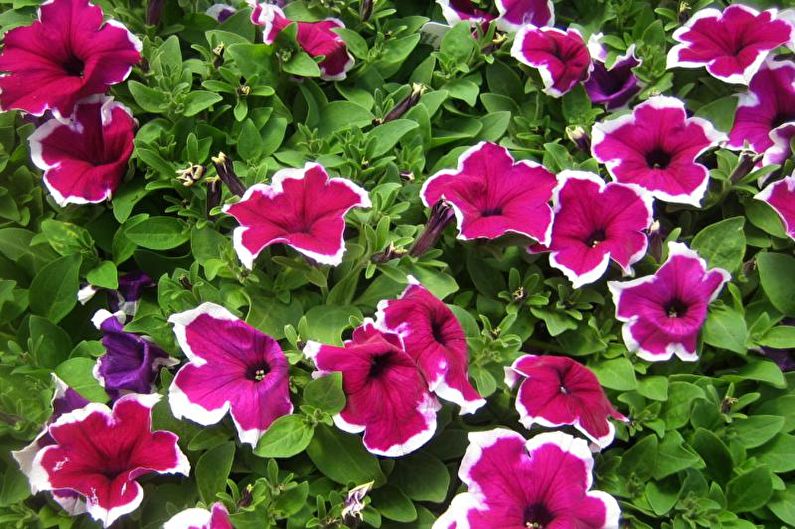
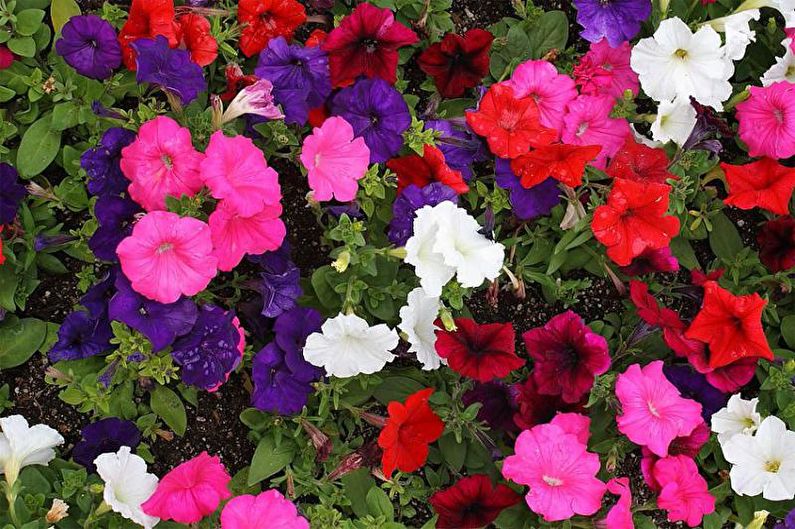
Petunia Care
The habitat of petunias in the wild is the equatorial and subequatorial belts where the countries of Latin America are located (Brazil, Uruguay, Paraguay, Bolivia, Argentina). It is a region with a warm and humid climate. Throughout the year, the air temperature is 30–33C, and never drops below + 10C. In such conditions, the plant manifests itself as a perennial, adding brightness to the lower tiers of the tropics, but in areas with snowy winters it has to be re-cultivated every season. It’s easy to take care of the southern guest - you only need to know the basic rules and give the plants what they need.
Growing
The propagation of petunia flowers is carried out from seeds, which themselves are extremely small. Sowing them directly into the open ground is not recommended - in cold land and without proper care they almost never emerge, but they develop perfectly on the sunny windowsill in "greenhouse" conditions.
Seeds are thrown into a container on moistened soil, but do not fall asleep on top. Before the appearance of 1-2 leaves, the container with the future seedlings should be covered with a film or a plastic lid, but it must be transparent so that there is light access. After 20-25 days, the sprouts dive in separate cups, and when a real leaf appears, pinch the top to strengthen the stem.
To feed young seedlings, a weak solution of potassium humate (3-5 drops per 250 ml of water) is used once a week. After about two months, the plants are ready for transplanting into the open air, but at least a week or two before, they should be gradually adapted to street conditions, for example, by putting them on the balcony in the morning and evening.
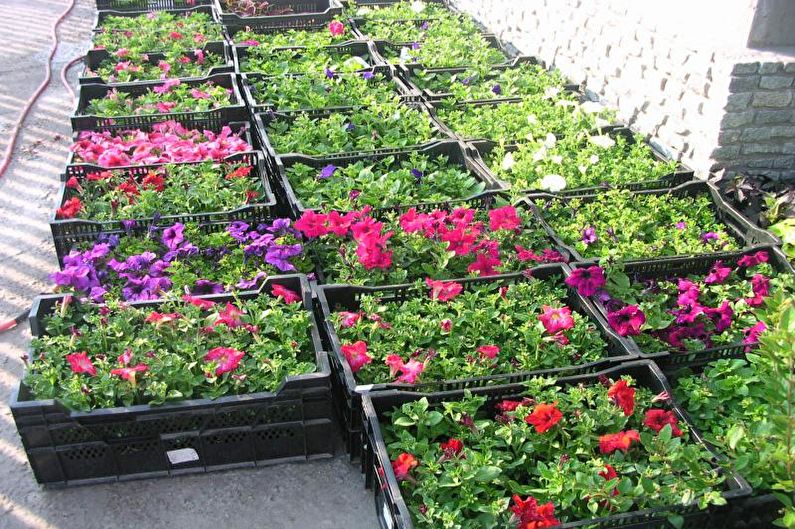
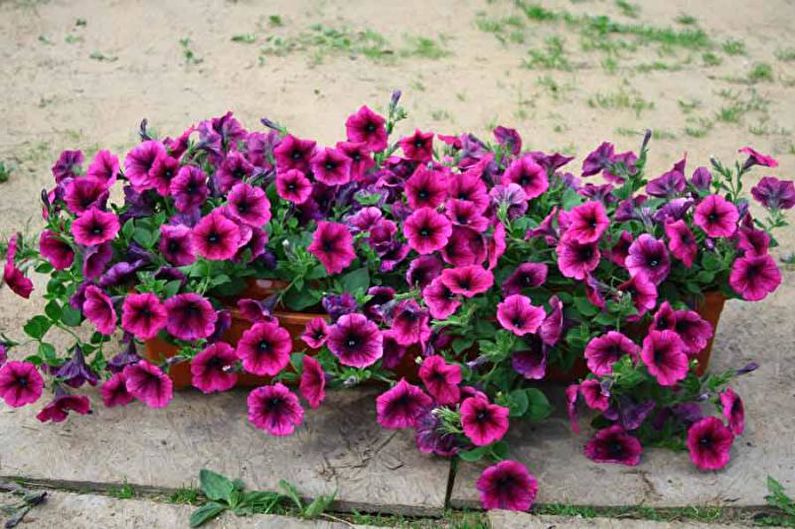
The soil
Petunias need a light but moisture-retaining soil. Ideally, deciduous-sod land (60%) mixed with sand and peat (20% each). Acidic soils can be balanced by adding a small amount of lime. If the bush will grow in a pot or planter, it is recommended to make a five-centimeter drainage layer, and add hydrogel to the soil.
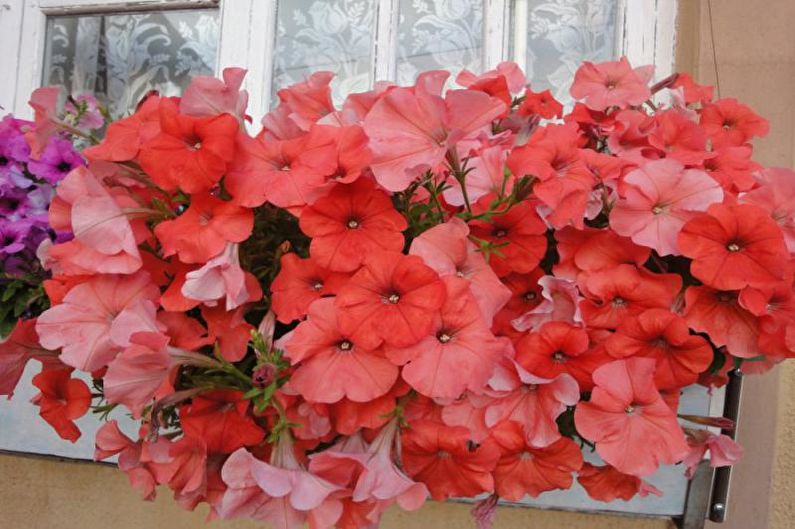
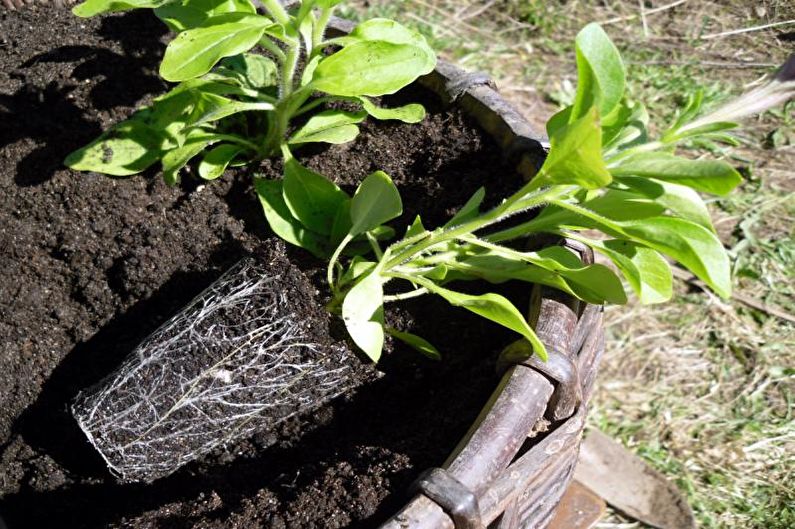
Fertilizers
Fertilizers are applied during transplanting seedlings to the street. It will not be out of place to add organic matter to the soil mixture - humus, compost or humine, but fresh manure should be discarded. Then, with a frequency of once a week, you can water the flowers with a light solution of potassium humate, which contributes to the appearance of more buds.
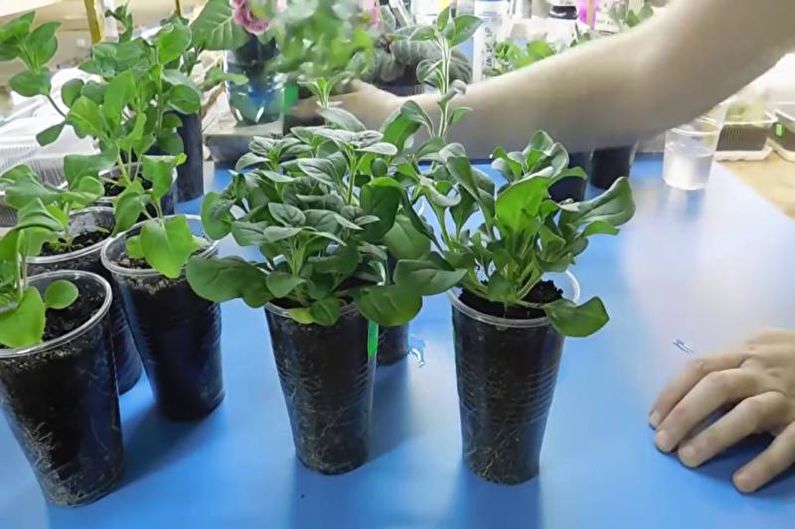
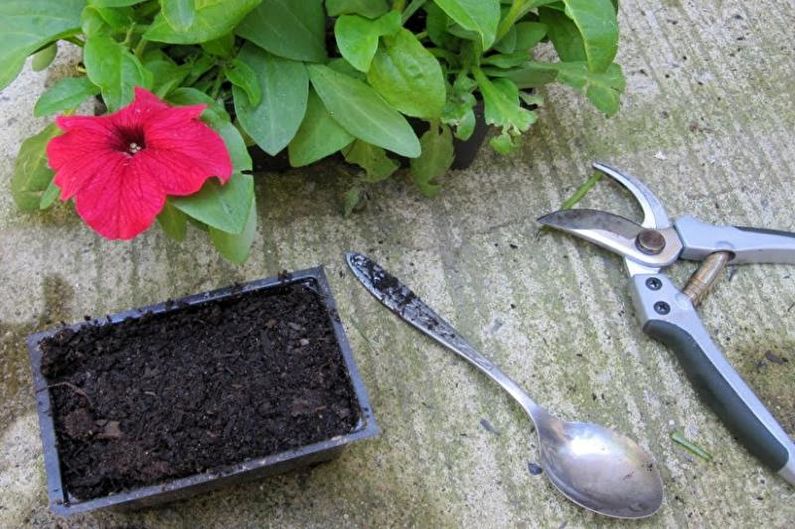
Moisturizing
Moisturizing the soil should be regular, but moderate. Short-term drought and short-term waterlogging during summer rains can withstand petunias well, but stagnation of water, especially in cold weather, can negatively affect the root system and reduce the decorativeness of the plant. In addition to watering, the ground under the flower should be periodically fluffed to provide air access.
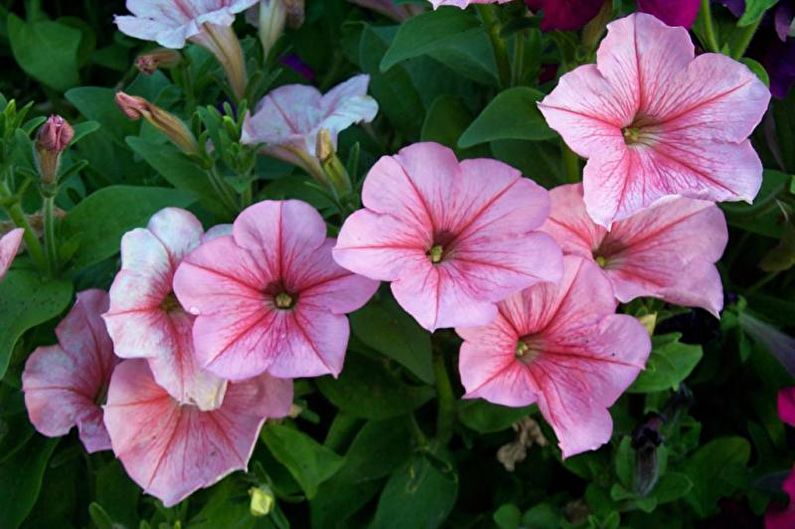

Lighting
Petunia needs bright and long-lasting lighting, so it is advisable to select areas on the south, south-west or southeast side, avoiding shady and cold corners. This plant is best suited open area away from trees, bushes and fences. However, under the visor of the veranda or arbor, the petunia will develop as well as under direct sunlight.
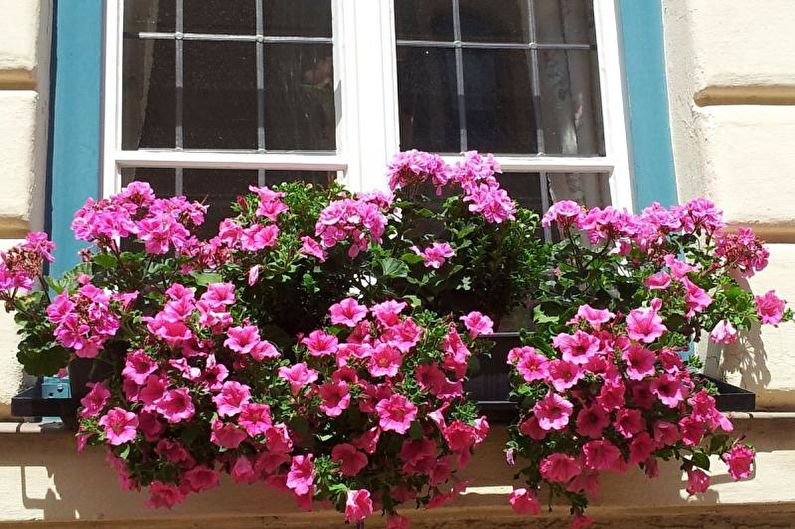
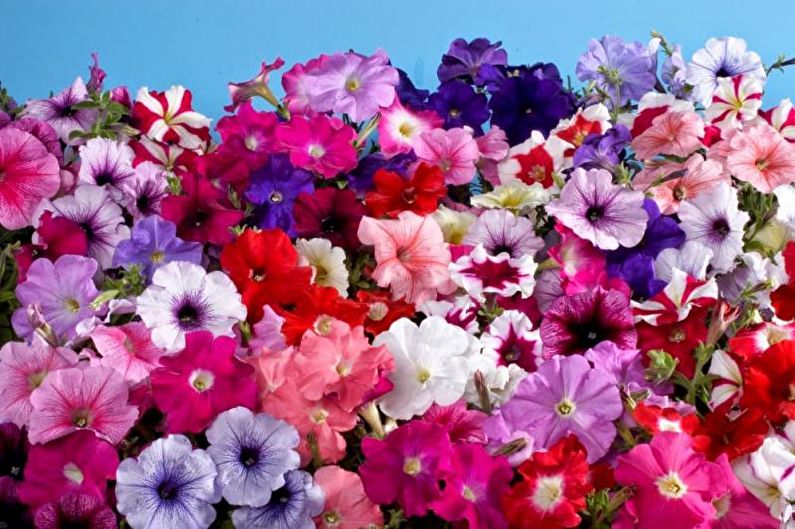
Petunia in the flowerbed
The colorful and attractive look of the petunia defines her solo part in flower ensembles. Any other plants in such a neighborhood are somewhat lost or seem inappropriate. The only exception is small ground covers, which should be lower and located at the edges of the composition.
And yet, despite the peculiar egoism of the tropical guest, the flower beds with its flowering bushes look unusually bright and noticeable from afar. You can choose varieties of contrasting or similar in tone colors, playing with the smallest transitions, or painting the landscape with colorful splashes and strokes.
By the way, it is petunias that are most often chosen for the design of non-standard flower beds. They are planted in a variety of objects that can only be filled with earth, whether it be an old bathtub, trolley, boots or even a bicycle. Also, these colorful and lush bushes play a wonderful role of framing along the edges of paths or rabatok, and they also make delicious wreaths around the base of the trees.

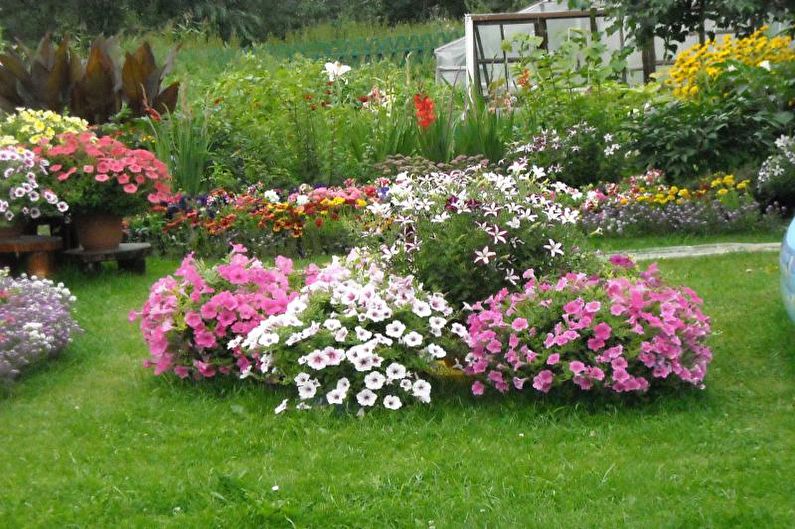
Ampelic Petunia
Hanging varieties of petunias are widely used for vertical gardening. In addition to the usual flower pots attached to balconies, fences, walls, awnings at the entrance to the house, arbors and summer terraces, there are whole columns and pyramids from flowering bushes. Special pipes with openings on the sides, which are filled with earth and through which beautiful plants then grow, serve as the basis for such structures.
Cascading views look very impressive at height - falling from window sills, arches or flowerpots, they look like amazing waterfalls made of fresh flowers. Liana-shaped branches of such plants can reach 1 meter in length, forming the likeness of bright curtains or tropical garlands.
In general, petunia is ideal for the most incredible landscape projects. With their appearance, these colorful clouds of flowers create a festive mood and add even more brightness to the summer. You can not only plant such an interesting plant in the flowerbed or within the facade of the house, but also decorate it with a city park, courtyard, lawn near the office, cafe or restaurant, shop window. Experiment and the world around you will be transformed!
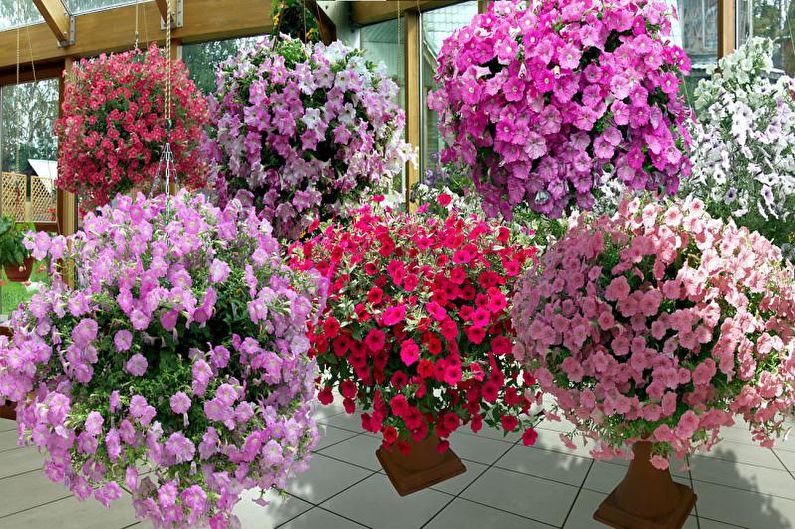
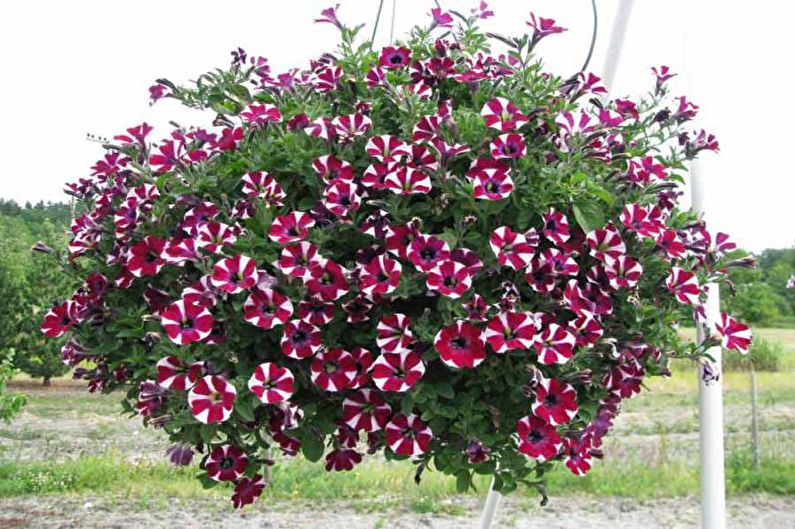

Petunia - photo
Our selection of photographs will clearly show you what the different types and varieties of petunias look like. See, compare and choose! Enjoy watching!
